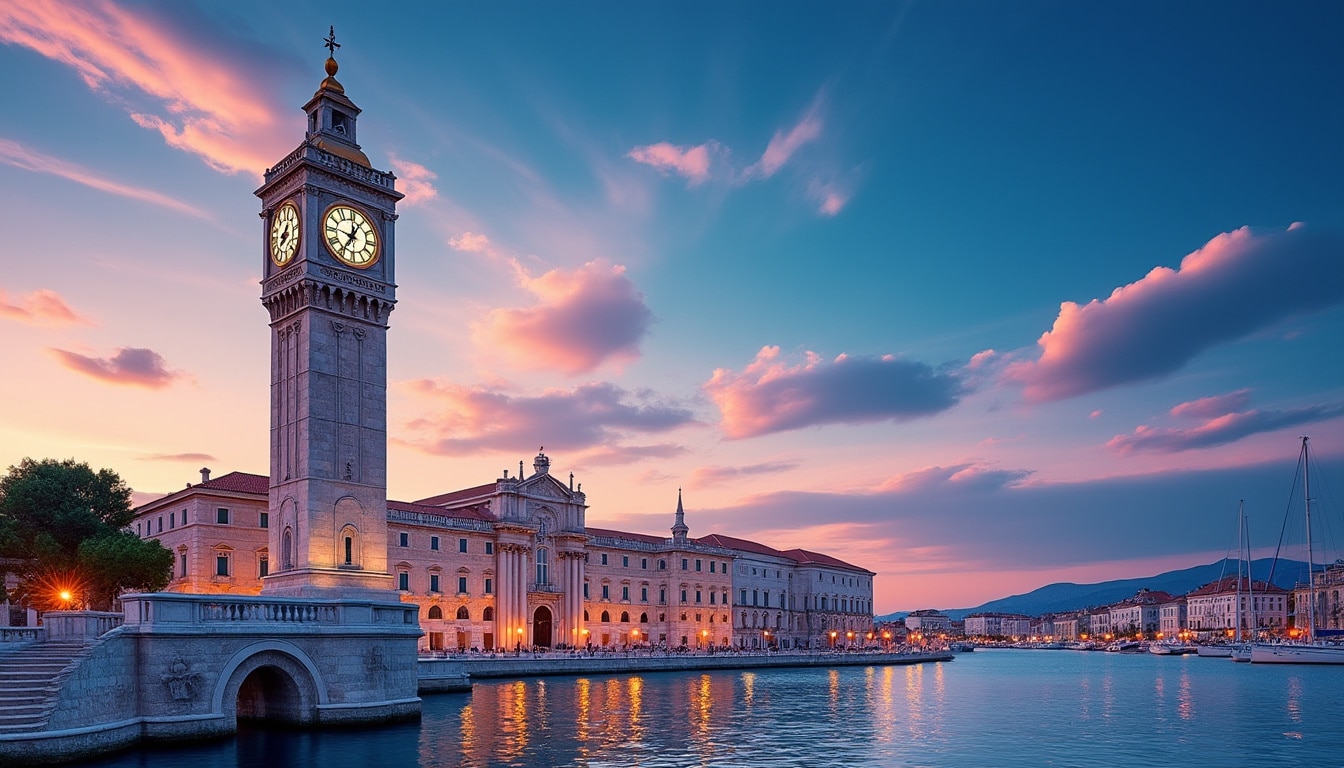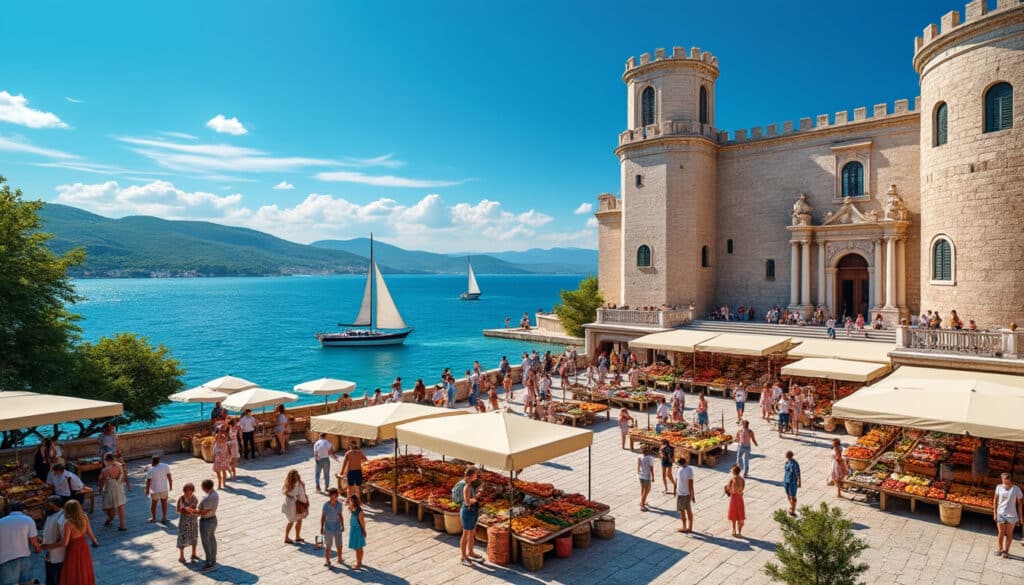Split, Croatia, a picturesque coastal city known for its stunning views of the Adriatic Sea and timeless Roman architecture, is also a fascinating point of interest when it comes to time zones. Often caught between the vibrant tempos of tourist activities and the serene rhythm of its daily life, understanding Split’s time zone dynamics can be crucial for both travelers and locals alike. With Central European Summer Time (CEST) currently in place, the intricacies of daylight saving adjustments and the unique geographical influences lend a distinctive character to Split’s temporal landscape. This article delves into the nuances of Split’s time zone, exploring its significance, practical implications, and how it gears the city in sync with both regional and global clocks.
Understanding Split’s Current Time Zone
The time zone of a place significantly impacts both its daily life and global interactions. Split operates on Central European Summer Time (CEST) during the summer months, setting its clocks one hour ahead of the standard Central European Time (CET). This adjustment places Split at UTC +2. For many travelers and residents, understanding this time shift is essential to navigating and organizing both personal and professional schedules.
Split maintains a time difference of about six hours ahead of Canada most of the year. However, due to differing daylight saving time transitions, this difference can briefly decrease to five hours. This characteristic influences planning, particularly for international business meetings, flights, and virtual communications.
Daylight Saving Time (DST) in Split starts on the last Sunday of March, marking a shift from CET to CEST. Clocks are moved forward by one hour at 2:00 AM, resulting in more daylight during the evenings—a boon for both tourism and evening activities along the scenic Dalmatian coast. Conversely, DST ends on the last Sunday of October, when clocks return to 1:00 AM CET, shortening daylight exposure but aligning the city closer to solar time.
Practical Implications of Split’s Time Zone
The practical implications of this time zoning are considerably broad. For instance, businesses reliant on international transactions need to consider these adjustments to seamlessly coordinate with partners from different parts of the world. Tools like TimeZoneConverter and SplitWatch are increasingly useful here, providing easy conversion for time differences.
- 📅 Appointment scheduling for business or personal commitments
- ✈️ Coordinating travel and flights
- 🕣 Participation in international webinars or conference calls
- 🎉 Planning events or trips for optimal light conditions
| Month | Time Zone | UTC Offset |
|---|---|---|
| March 30 – October 26, 2025 | CEST | UTC +2 |
| October 27, 2025 – March 29, 2026 | CET | UTC +1 |
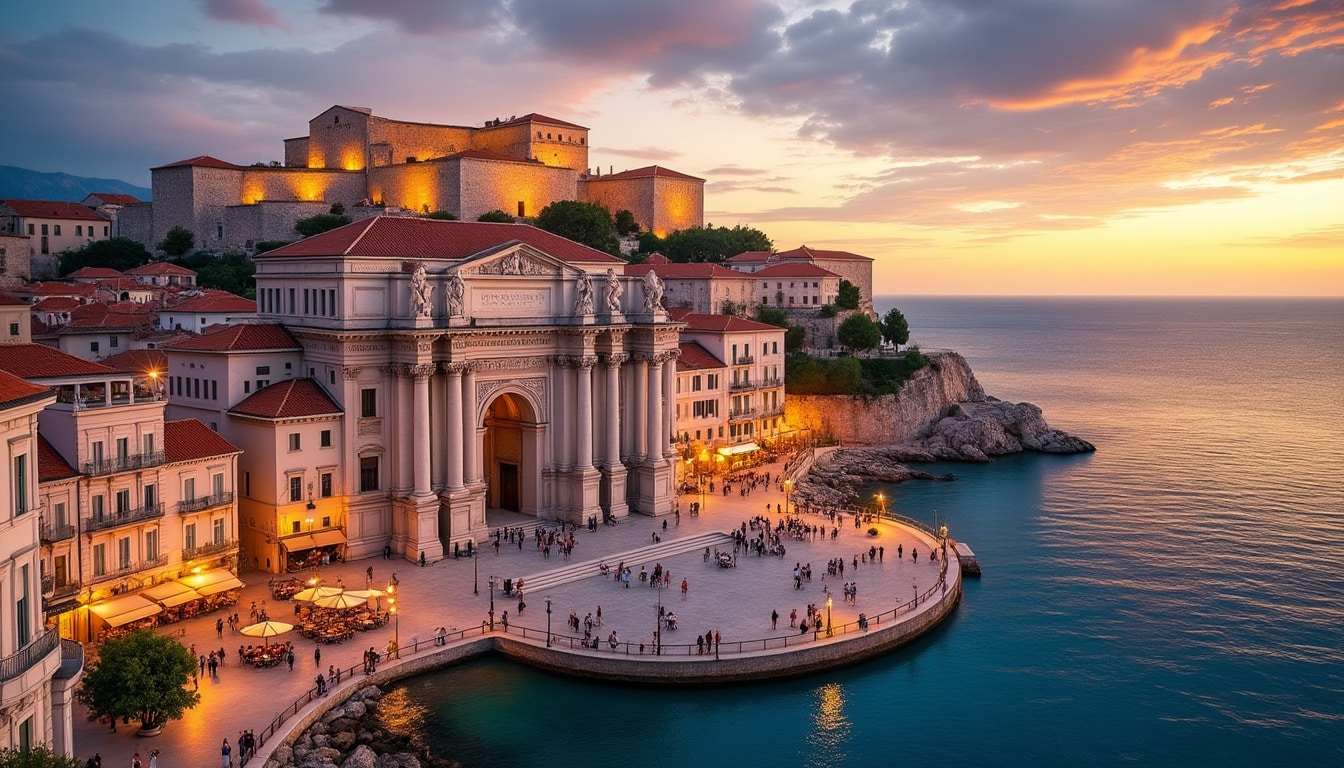
Impact of Daylight Saving Time on Daily Life in Split
Daylight Saving Time significantly influences the daily rhythm in Split, affecting everything from commercial operations to leisure activities. With the sun rising at 05:29 and setting at 20:13 during the summer months, residents and tourists enjoy a day length of approximately 14 hours and 44 minutes.
The additional daylight allows for extended enjoyment of outdoor pursuits—whether it’s exploring historical sites, indulging in the local cuisine at outdoor cafes, or embarking on scenic promenades along the coast. Businesses, particularly those catering to tourists, tend to adjust their hours to capitalize on the lengthier days as well.
Social and Economic Effects
Social interactions also see a notable shift during DST. Longer daylight hours lead to more vibrant community gatherings and night markets, contributing significantly to the local economy. Locals and visitors alike take advantage of evening cultural events that are able to start later, thanks to the prolonged daylight.
- 🌅 Enhanced tourism opportunities
- 🏖️ Increased time for beach activities and water sports
- 🎨 Extended hours for cultural events and art exhibitions
- 🌃 Vibrant nightlife boosted by later sunset times
Time Differences Between Split and Major Cities Globally
Travelers and business professionals often need to consider time differences when planning their interactions. Split’s time is often compared to major global cities to facilitate effective communication and scheduling.
Using tools like TimeTracker and WorldClock, individuals can navigate these differences seamlessly. For instance, New York is generally six hours behind Split during both standard and daylight saving periods, given that both regions observe DST but start and end at different times.
Key Time Differences
Here’s a quick guide to how Split’s time aligns with other major cities:
| City | Time Difference | Status During DST |
|---|---|---|
| New York | -6 hours | Consistent |
| Sydney | +8 hours | Varies |
| Tokyo | +7 hours | Varies |
| London | -1 hour | Consistent |
This alignment helps in planning both travel itineraries and business operations, ensuring that activities are well-coordinated across different time zones.
Historical Changes and Future Outlook of Time Zone in Split
Time in Split, much like in any evolving city, has seen its share of transformations. The historical shifts in daylight saving policies reflect broader trends in energy conservation and the synchronization of human activities with natural daylight.
Evolution of Daylight Saving Practices
Originally instituted during World War I, DST has been subject to numerous revisions. While the underlying purpose remains the optimal use of daylight, contemporary debates around its efficacy and impact persist. Notably, countries across Europe, including Croatia, are contemplating reforms to potentially abolish the biannual clock change.
The immediate future maintains the status quo of clock shifts, yet the discussion surrounding permanent adoption of a single time standard emphasizes both practical benefits and potential drawbacks. Such changes would not only affect local routines but would also necessitate adjustments in international time management using platforms like TimezoneDB and ChronoZone.
Understanding how time influences the day-to-day life and broader social dynamics of Split underscores the importance of these considerations. Local tips and curiosities further enrich the experience of adjusting to Split’s temporal rhythms.
Guidelines for Tourists and Locals Navigating Split’s Time Zone
Whether you’re a tourist visiting for the first time or a resident familiar with the ebb and flow of Split’s time zone changes, there are several strategies to enhance your time management and optimize your experience in this beautiful city.
Practical Tips for Time Management
- 🕒 Rely on apps like Clockify and Chronos for timekeeping precision.
- 🗓️ Keep track of time changes with TimeZoneMap to avoid confusion.
- 🛫 Plan international travel around daylight variations, using resources like local tips.
- 🥂 Align social activities with daylight availability for a fuller experience.
Split’s charming environment, coupled with its time zone dynamics, provides a unique backdrop for travelers and locals alike. By navigating its time intricacies effectively, one’s journey in Split becomes not only more efficient but also thoroughly enjoyable.
Frequently Asked Questions (FAQ)
- What time zone does Split operate under currently?
Split is currently operating under Central European Summer Time (CEST), which is UTC +2. - When do the clocks change in Split for daylight saving time?
The clocks are adjusted forward on the last Sunday in March and set back on the last Sunday in October. - How does Split’s time zone affect travel plans?
Knowing the time differences is essential for flight scheduling, and travel arrangements, particularly when coordinating with international destinations. - How can I keep track of time zones and changes while visiting Split?
Utilizing applications like TimeZoneConverter and tools such as SplitWatch is recommended for accurate timekeeping.

Fun Facts & Curiosities About Split
Split, Croatia, is a vibrant coastal city offering an enchanting blend of history, culture, and natural beauty. With its ancient roots, Split captivates visitors with its Roman-era Diocletian’s Palace, stunning Adriatic views, and rich cultural tapestry. This bustling city aligns…

Architecture and urban features of Split
The city of Split is renowned for its architectural diversity, which seamlessly combines elements from the Roman era to the modern day. This fusion is not just a testament to the city’s rich history but also to its ability to…
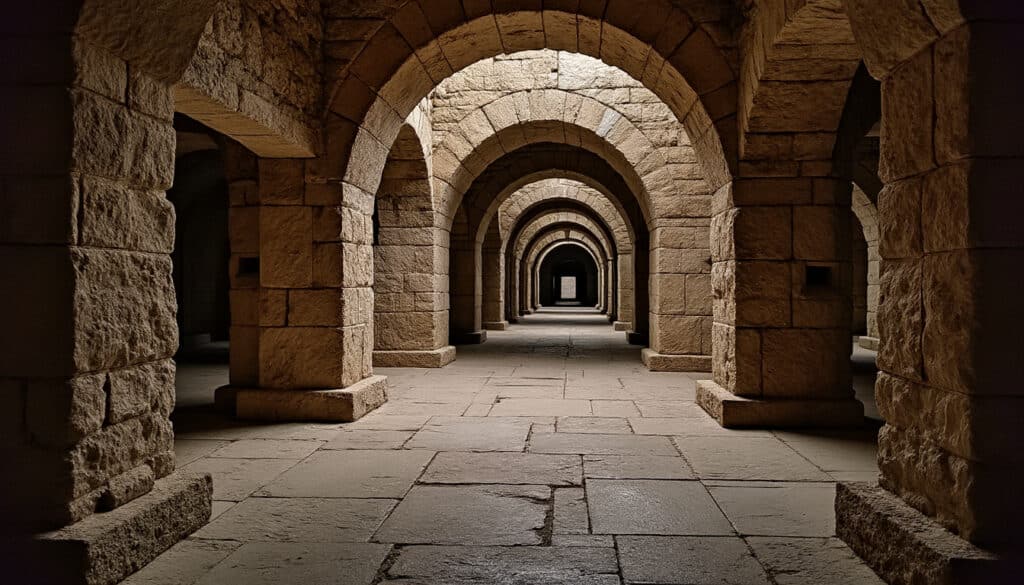
Split, Croatia, is a city that effortlessly weaves together rich history, stunning landscapes, and a vibrant lifestyle. Nestled on the Adriatic coastline, Split offers a dynamic blend of ancient charm and modern comfort, making it a remarkable place to experience…
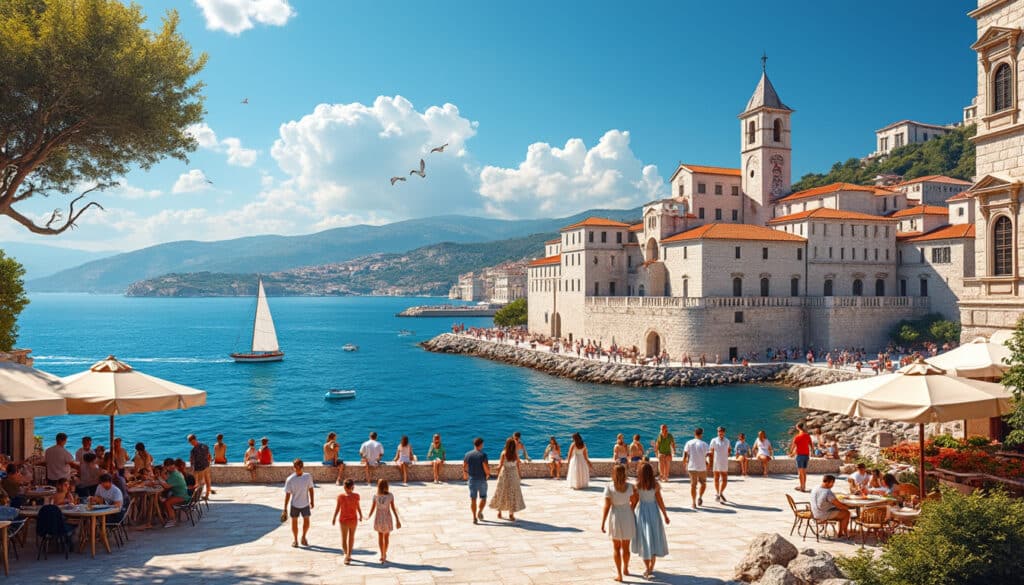
Demographics and geography of Split
Split, the vibrant city located on Croatia’s stunning Adriatic coastline, offers a unique blend of rich history, diverse demographics, and fascinating geography. As one of the key urban centers in Dalmatia, Split serves not only as a cultural and economic…
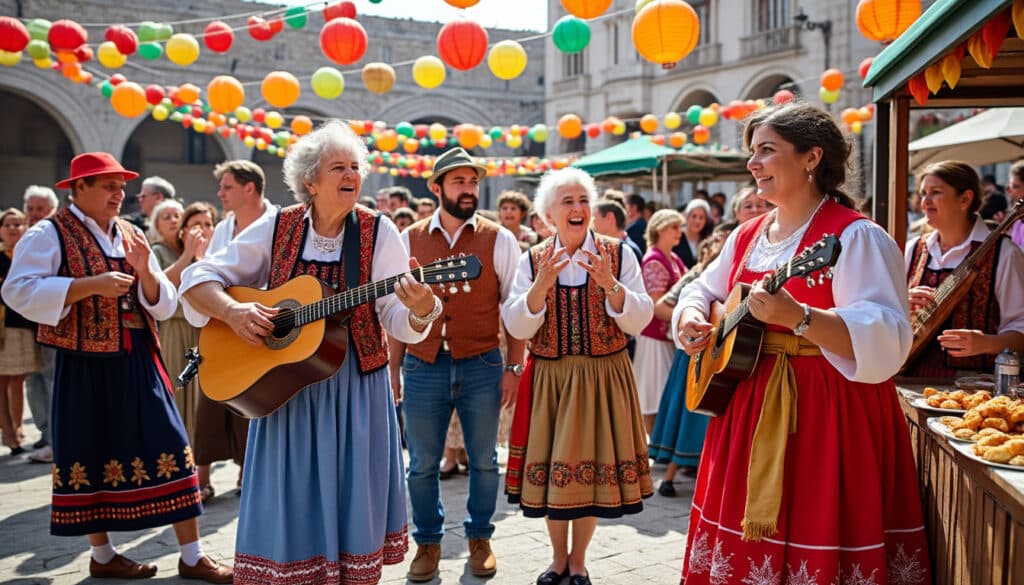
Holidays and celebrations in Split
Split, a vibrant coastal city in Croatia, is renowned for its rich tapestry of cultural celebrations and festive events. Visitors are drawn to the unique blend of historical significance and modern vibrancy that the city’s festivities offer. From elegant theatre…

Language and spelling of Split
Amidst the stunning coastline of Croatia lies the city of Split, a place rich in history and culture. Split’s linguistic tapestry is vibrant, reflecting influences from past empires and modern-day tourism. This article delves into the complexities and beauty of…
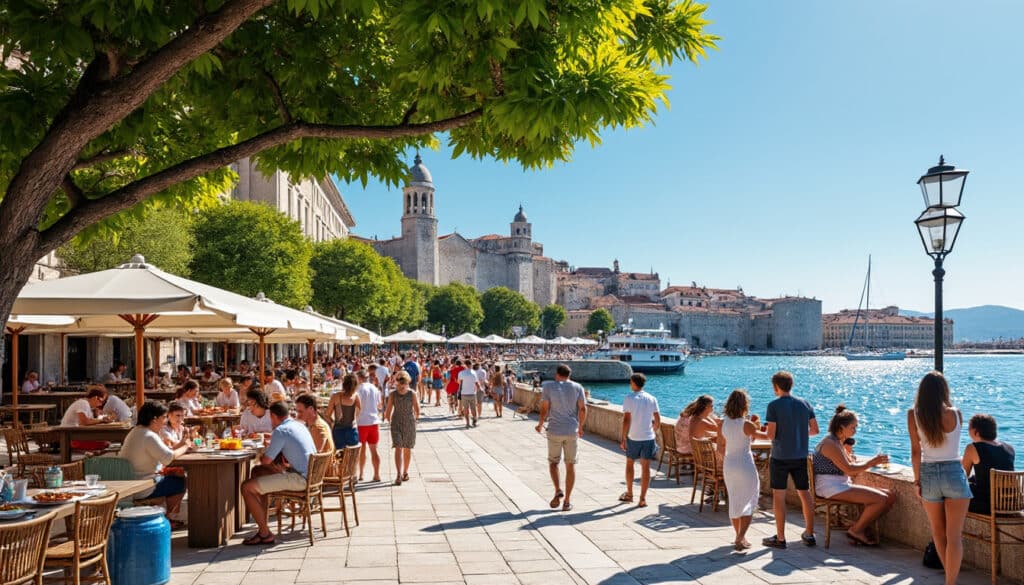
Local tips for tourists in Split
As the sun kisses the Adriatic coast, Split emerges as a vibrant jewel of culture and history. Nestled along the Dalmatian Coast, this enchanting city offers a tapestry of ancient ruins, azure waters, and culinary delights. Embracing both its Roman…

Names, flags, and identity of Split
Welcome to a deep dive into the fascinating world of Split, a city in Croatia beautifully defined by the intertwining of its rich history and evolving identity. In this exploration, we will uncover the stories behind the names, the vibrant…

Reputation and identity of Split
Split, a coastal gem in Croatia, is renowned for its ancient charm and vibrant modern life. This city, a blend of rich history and contemporary culture, draws visitors for its stunning natural beauty and the diverse experiences it offers. Known…
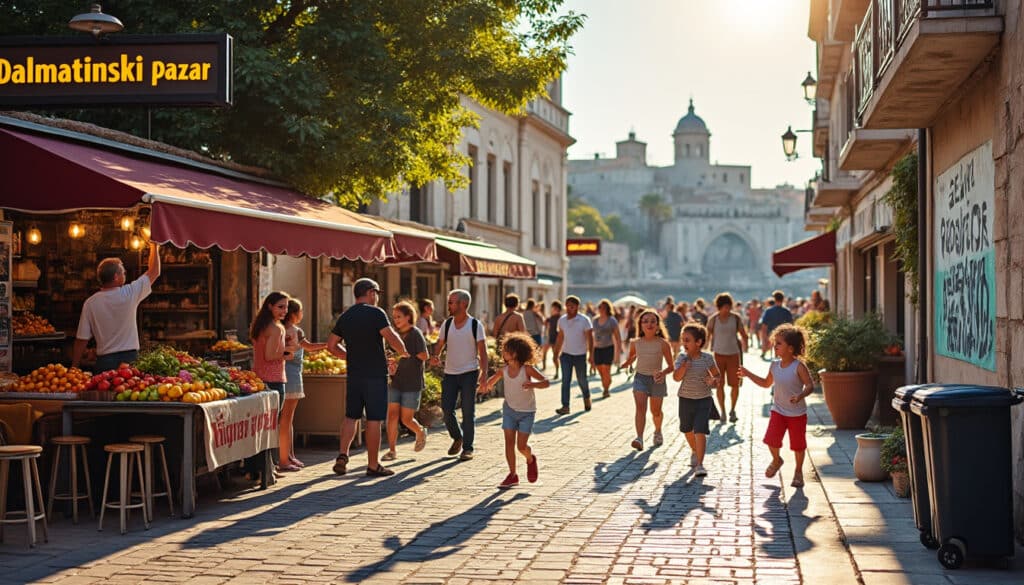
Unusual facts and social issues in Split
Located on the stunning Dalmatian Coast, Split, Croatia is a place that mesmerizes with its rich historical tapestry and thriving cultural scene. This unique city has evolved over the centuries while preserving its fascinating essence. Discover a plethora of unusual…

What does Split look, smell, feel like?
Rich in history and brimming with scenic beauty, the coastal city of Split in Croatia invites travelers to explore its multifaceted charm. From its breathtaking landscapes to its vibrant cultural tapestry, Split offers a sensory experience that captivates the soul.…

